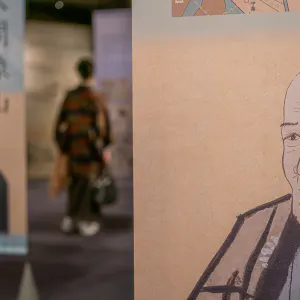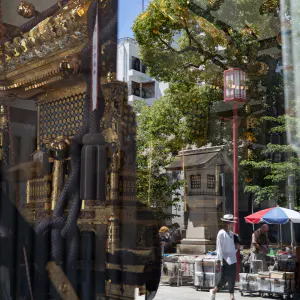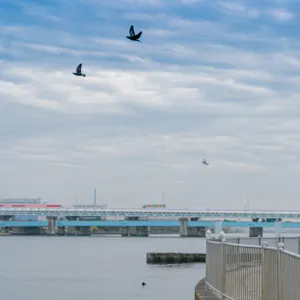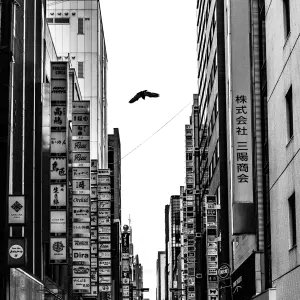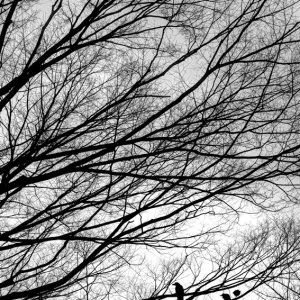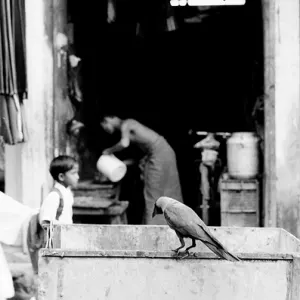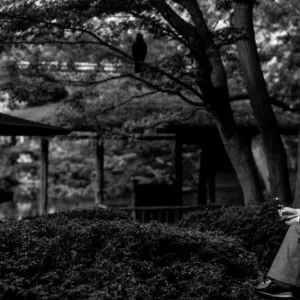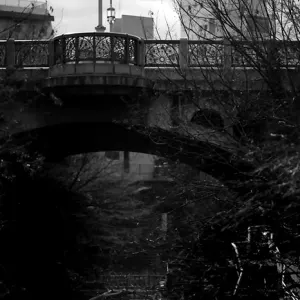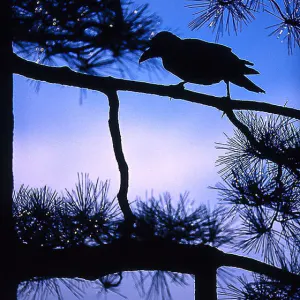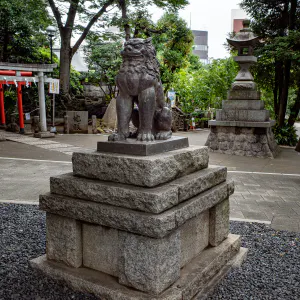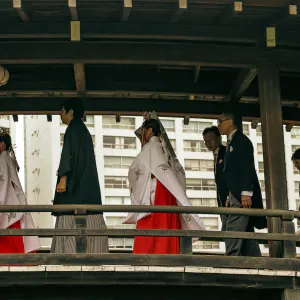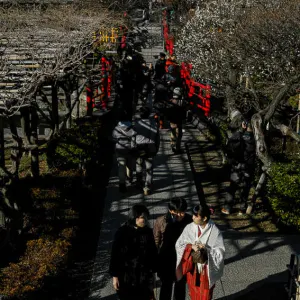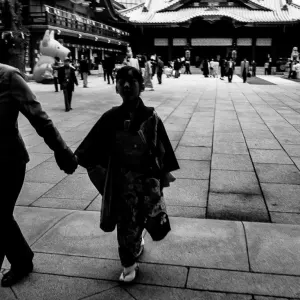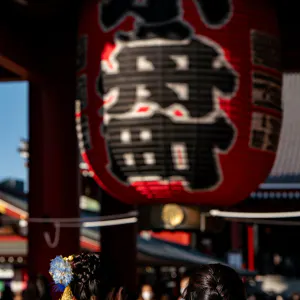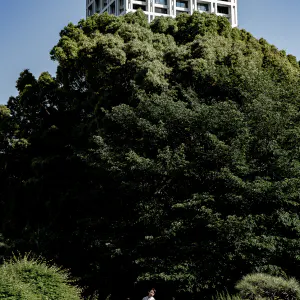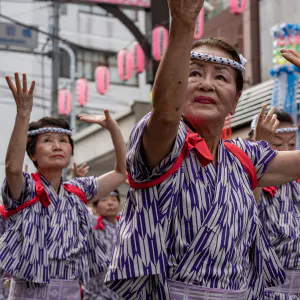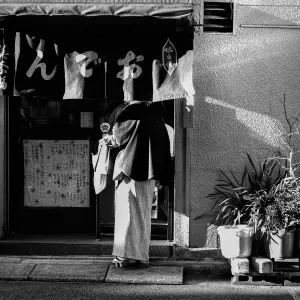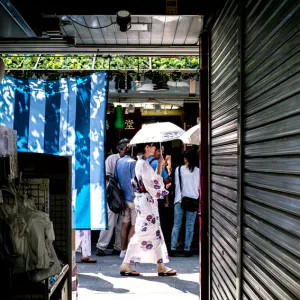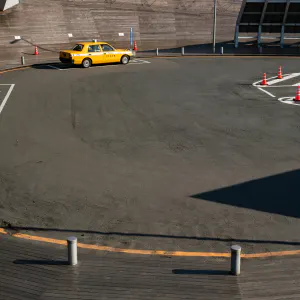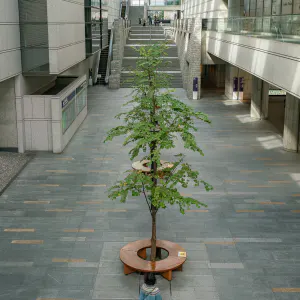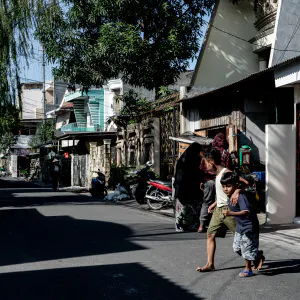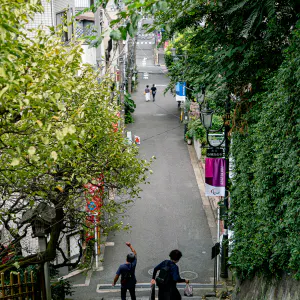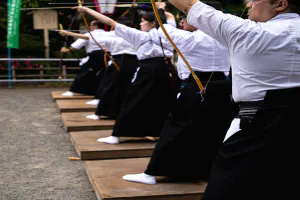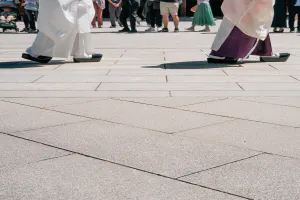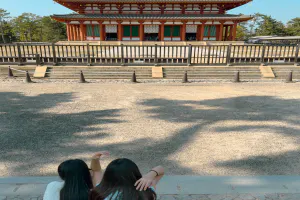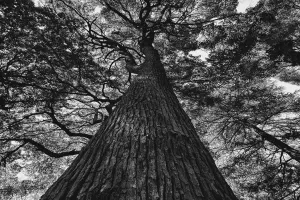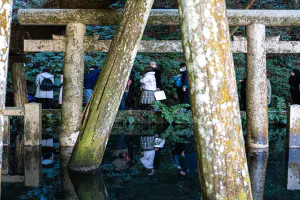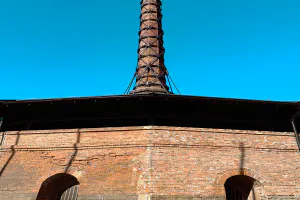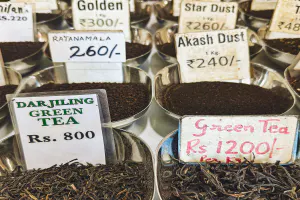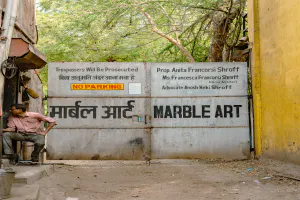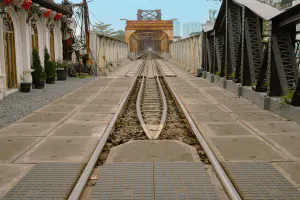The courtesan and the crow on the edge of the roof were looking in the same direction
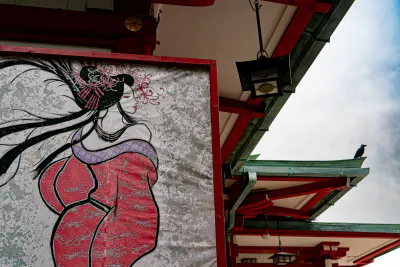
Founded in 1627, Tomioka Hachimangu Shrine was the birthplace of Edo Kangen Sumo (the forerunner of today's Grand Sumo Tournament) and has been a very popular Shinto shrine since the Edo period. The Fukagawa Hachiman Festival, an annual festival, is also depicted in the "Fine Views of the Eastern Capital at a Glance", a book of illustrated poems written in 1800 by Katsushika Hokusai, who went by the name Hokusai Tatsumasa. The Fukagawa Hachiman Festival is still held mainly on August 15 every year and is considered one of the three major festivals in Tokyo.
As the land around the shrine became more crowded, it was developed and allowed to be used for cooking teahouses, and it seems to have naturally become a place where unauthorized private brothels gather. The shrine grounds where the god resides and the brothel where the prostitute resides are both from the same unreal world. They go well together. The brothel district in Fukagawa was in existence until the beginning of the Heisei era (1989), so it had a long life.
As I entered the precincts of Tomioka Hachimangu Shrine, I saw a large painting by the main shrine, "Goldfish Courtesan," by an artist named GOMA, who personified the goldfish Nebuta used in the Nebuta Festival in the Tsugaru region. At first glance, it may seem out of place to have a prostitute, a courtesan, in the precincts of a shrine where a god sits, but considering the relationship between shrines and brothel districts, it is not such a strange combination.
The goldfish courtesan turned her head to the side and looked toward the former brothel districts. A crow perched on the roof at the back was also looking in the same direction.
| Aug 2021 STILL LIFE TOKYO | |
| CROW FUKAGAWA KIMONO LONG HAIR PAINTING ROOF SHRINE |
PHOTO DATA
No
12009
Shooting Date
Feb 2021
Posted On
August 25, 2021
Modified On
August 18, 2023
Place
Tomioka Hachimangu Shrine, Tokyo
Genre
Street Photography
Camera
SONY ALPHA 7R II
Lens
ZEISS BATIS 2/40 CF
